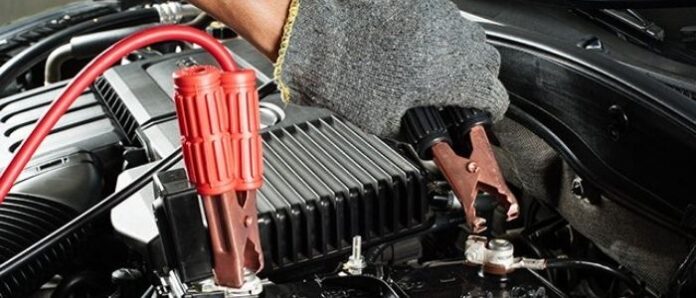A deep-cycle battery is a commonly used form of a battery designed to be regularly deeply discharged to a really low capacity. These batteries are generally lead–acid batteries in the same form factor as automotive batteries, although newer technologies, such as lithium-ion batteries are beginning to become common in this same form factor, albeit not economically viable for most uses.
For lead-acid deep-cycle batteries, depth of discharge (DOD) and the number of charge and discharge cycles are inversely related, i.e., the number of charge and discharge cycles a battery lasts for depends on how much it is discharged before it is charged again. For best storage vs cost, a depth of discharge of around 50% is generally recommended.
Normally well maintained and properly charged deep cycle batteries naturally die due to corrosion. However, most premature deep cycle battery failures that are not recharged on a regular basis is due to sulfation. Sulfation is caused when a battery’s charge drops to a very low amount, or if the battery tends to be continuously undercharged. Lead sulfate crystals tend to build up on the plates, hindering electrical conductivity significantly. Recharging a sulfated battery is an exercise in futility, due to the insulating sulfate coating on the conducting plates.
It can be easily be overcomed by using a proper method like ez battery reconditioning. A dead battery can’t hold a charge, and in some cases, are unable to take a charge. So, after checking if the battery charges or not, the following steps may be followed
Steps to recondition a dead battery
1. The most convenient way would be to use a charger made for dead batteries. These chargers tend to have extra steps for desulfation and also made to go up to a higher voltage than most commercially available chargers. However, it is recommended that you keep a watch, excessive heating or smoke indicates something is serious wrong. At that point, just sell it for scrap, for all it’s worth .
2. In case a compatible charger cannot be found, or is inaccessible, one might also try to jump start the battery using a good battery, jumper cables, and a charger.
2.1 Connect the fresh battery and dead battery positive to positive and negative to negative. Also, so ensure that the dead battery is indeed dead before this step, or else it might just blow up.
2.2 Then, connect the fresh to the charger. Turn on the charger. The charger will start charging the fresh battery, and hopefully the dead one too.
2.3 After some time, check up on the dead battery for warmth. As said before, if it’s hot, or smoking up, just scrap it.
2.4 With a voltmeter, check back to see if the battery can now give 80% of final voltage or above. If that turns out to be the case, just charge with a regular charger for now.
3. In case both of the above steps are tested, and fail, then the lead sulfate can be knocked off the plates by a high voltage ( 50% higher than battery maximum) charge at low current for short periods. In this case though, the sulfate sinks to the bottom of the battery, stacks up, and covers the bottom of the plates. If the pile of sulfate covers a significant amount of the plates, the battery output is eventually lowered. If you have to resort to this, please replace your battery as soon as you get the chance.
4. In case neither of these steps work, you might want to call a professional. However if you are in a pinch, you may also clean the battery terminals with baking soda and water, and refill the cells with distilled water (to avoid sparking and igniting leftover hydrogen/ oxygen in the cell). The battery might start working immediately, or might need charging before it’s functional again.
Final words
While the steps above might restore your deeply discharged battery back to working condition, the battery doesn’t charge to the same degree again. That is why, the best recommendation is to use your battery regularly, and to not let it discharge at all. With that, and a combination of the above tips, a single deep cycle battery might last you decades.


